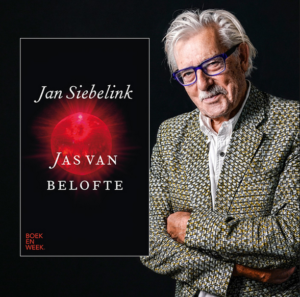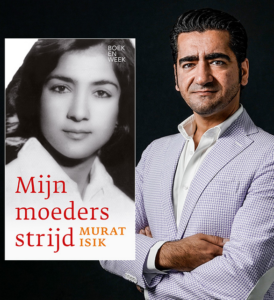About the underrepresentation of female authors in the Dutch week of Books
On the 23th March, the week of books started in the Netherlands. The theme of this year was the mother, the woman. The inspiration came from the famous Dutch poet Martinus Nijhoff from 1934. In his poem, he refers to his mother, who is standing next to the stir of a boot, sailing away into heaven. The organisation of the week of books said the theme meant to ‘shine light on motherhood and femininity. The theme was meant to be an ode.’[1]
For all the internationals that have no idea what I am talking about, worry no more! The week of Books in the Netherlands is not actually a week; it lasts for 10 days. It is organised to promote Dutch books and to encourage Dutch citizens to read more. The organisation wants to promote Dutch literary heritage. The week takes place in March, every year. It is a tradition that has been happening since 1932. However, literary heritage is historically much older. In the Netherlands the promotion and canonising literature has been happening since the eighteenth century. In the beginning, it was mostly to improve the quality of literature. Later on it was used for Nation building, to create a Dutch identity, foster patriotism, and to educate its readers.[2] During this week, three authors write separately a book (called gift), an essay and a poem. Most of the time, they are inspired by the theme. This year’s gift was a good example of that this does not always happen.


The gift written by the famous Jan Siebelink, and is called ‘the jacket of promises.’ There was a lot of commotion about the fact that Siebelink choose to take a different subject than the theme. However, there was an even bigger commotion about the fact that two male authors wrote the Gift and Essay, while the theme was the Mother the Woman.
Fortunately, the literature nowadays has many purposes; and is not solely focussed on making us good Dutch citizens. This does not mean the reader is not influenced. Through the canon, we are influenced by what we see as ‘true literature’ and what are ‘chick flicks’. Besides, the reader’s image about what a true author looks like is affected. This image is mostly masculine. The books that are promoted in the shortlists support this. Why the shortlist does represents mostly male authors?
The reasons that are given are numerous. For example, there are just not as many female writers as male authors. Or maybe women are scared to publish their work. Finally, the quality of their work just is not as good as the work of men. Corina Koolen from the University of Amsterdam wrote her dissertation on this exact subject. In her thesis ‘Reading Beyond the Female. The relationship between perception of author gender and literary quality’ (PDF) she compared the quality of male and female writing. She did a quantitative research rather than a qualitative investigation. The results of her thesis were that there is no difference in the excellence of either works. If this is the case, why aren’t more books written by female authors on the shortlists or in the literary canon? The answer is stereotypes and prejudices.[3]
This is why so many people were upset about the fact that the organisation chose two male authors to write the gift and the essay. By doing this, the stereotype about female authors was confirmed. In a week where they say, they want to achieve awareness for literary heritage and encourage Dutch citizens to read. By appointing two male authors, they make it clear that literary heritage is in fact masculine. Even when the theme was about women, mothers in relation to literature![4]
According to my internship supervisor and me, this is unacceptable. We want to show that women, who were mothers and writers at the same time did exist. We want to do this by giving historical examples and bring this information to interested lay people by the means of a blog. We solely focus on the author and authorship and how their contemporaries perceived their work. We are doing this with the help of the online database called New approaches to European Women’s Writers Virtual Research Environment, in short NEWW VRE. In this online database one can do research into female authors from the Middle Ages until circa 1930.[5]

This way we hope to give a broader perspective on female authorship and their work. For example Tine van Berken, which was a pseudonym for Anna Christina Witmond-Berkhout, who lived in the nineteenth century and was a mother of one? She wrote the famous novel Mother Wassink (1900) and awarded by the ‘Elsevier Illustrated Monthly Journal.’[6] Another example was Elisabeth Hoofman who lived in the eighteenth century. She was a stepmother of Hester, who was deaf-mute, and had one daughter of her own, named Petronella. Hoofman who was well known in her days mostly wrote verses. The famous homo universales David van Hoogstraten wrote about Hoofman that he hoped she would get daughters that had the same literary talent Hoofman had.[7]
These are just two examples of many other Dutch female authors. While doing small studies into these female authors, we see that stereotyping is not a new thing. It is something that does not pass over time. Our goal is to show to a broad public and the young generation that there were in fact women who were able publish and were not scared to do so. That there were in fact female writers who were appreciated by their peers, contemporaries and scholars. This way we hope to defy the prejudices that occur today, and we hope we can make a small contribution to raise awareness for female authors, motherhood and women.
Media:
From the boekenweek website and NEWW VRE website.
List of references:
[1] https://www.boekenweek.nl/moeder-aan-het-roer-niet-achter-het-fornuis/
[2] F. Mathijsen-Verkooijen Petiet, ‘Een voldingend bewijs van ware vaderlandsliefde. De creatie van literair erfgoed in Nederland 1797-1845’, History of literature (2011) 44.
[3] Laura Mol, ‘Vrouwen schrijven niet minder literair dan mannen’, website van de Universiteit van Utrecht, 22 May 2018
https://www.sg.uu.nl/artikelen/2018/05/vrouwen-schrijven-niet-minder-literair-dan-mannen
[4] The two male authors Jan Siebelink and Marit Isik are both great authors. The two male authors are not at fault here, but the CPBN who appointed them.
[5] http://resources.huygens.knaw.nl/womenwriters
[6] Elizabeth Kooman, Berkhout, Anna Christina, in: Digitaal Vrouwenlexicon van Nederland. URL: http://resources.huygens.knaw.nl/vrouwenlexicon/lemmata/data/BerkhoutTine
[7] W.R.D. van Oostrum, Hoofman, Elisabeth, in: Digitaal Vrouwenlexicon van Nederland. URL: http://resources.huygens.knaw.nl/bwn1780-1830/DVN/lemmata/data/Hoofman [13/01/2014].
